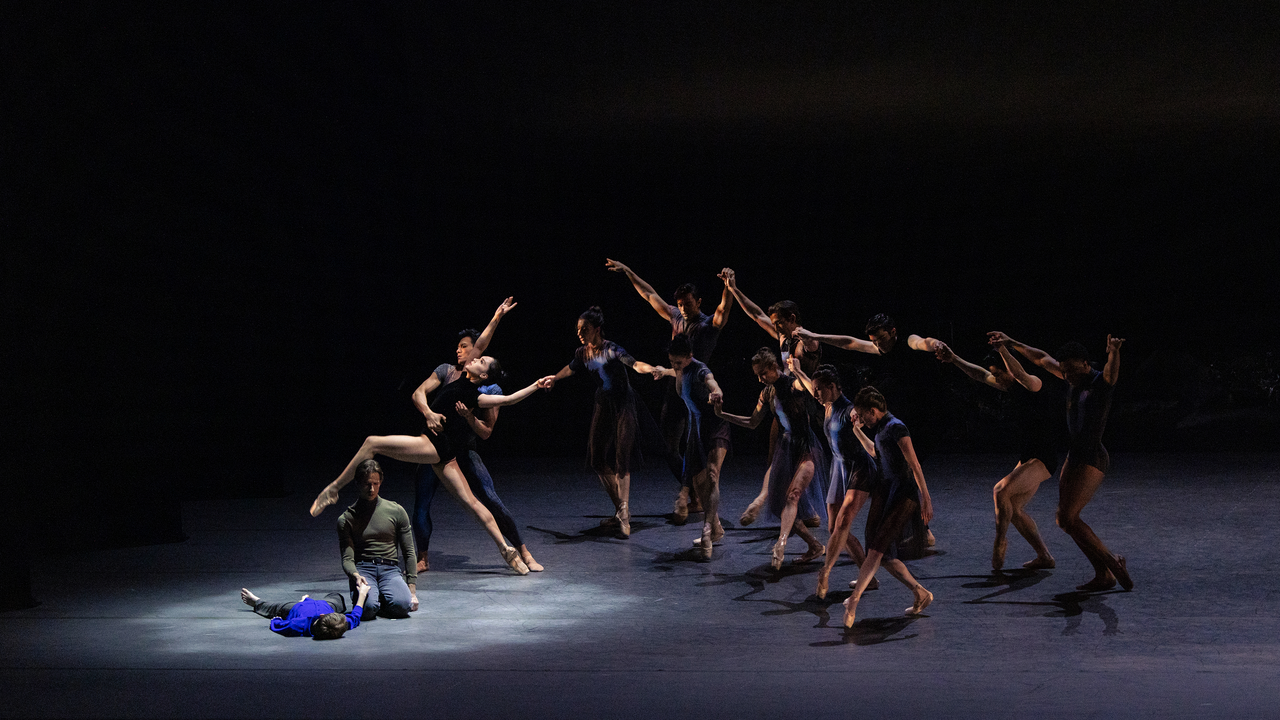
2024-03-04 词
The dance is in two parts, each set to music by Mahler: the Funeral March from the First Symphony, followed by the Adagietto from the Fifth—death followed by grieving. As the Funeral March begins, with a minor-key version of “Frère Jacques,” the lighting, by Mark Stanley, slowly forms a kind of eerie sunset, faintly illuminating an abstract design, by Moritz Junge, resembling rubble at the back of the stage. A blackness rises from the rubble and covers the backdrop to the height of a man: the dancers will perform against this eclipse, which in the course of the ballet creeps upward, further extinguishing the light. The dancers enter wearing costumes that blend with the shadows. I found myself squinting and failing to make it all out, and then realized that this was the point: we were seeing this hazy and barely decipherable world through the eyes of the father, not our own. The dancers appear disorientingly remote, and their angular, arrested movements jarringly interrupt the waves of music and feeling that seem to belong to the father alone.
免责声明:本文来自网络公开资料,仅供学习交流,其观点和倾向不代表本站立场。